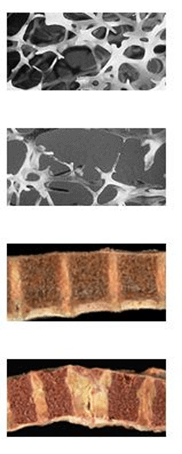Accuracy – can help you prevent fractures
In the EU alone, osteoporosis patients account for some 500,000-hospital days each year, a figure that is likely to double during the next 50 years. It is clear that as the problem worsens, a solution is needed that can accelerate the accurate diagnosis of those at the highest risk for future fragility fractures.
Osteoporotic fractures can be prevented through early diagnosis, exercise and the timely use of appropriate medication. The most important prerequisite for successful treatment is early, reliable and cost-effective diagnosis. This is now possible with a compact and highly accurate tool at the “point of care” – DXL Calscan.
The DXL Calscan uses our Dual X-ray and Laser technique, which combines traditional DXA with a precision laser measurement of heel thickness. The DXL technique can more accurately reduce the errors caused by adipose tissue with DXA alone.
The advantages of scanning the heel with DXL technology are many. The ability of Calscan to better exclude adipose tissue from BMD results is a significant improvement to DXA technology aside from the obvious savings in cost and space. The Calscan avoids many other errors common in hip and spine scanning such as aortic calcification, patient positioning, compression fractures, etc. These errors have been well documented in the literature however an article published in 2008 by Blake and Fogelman (JBMR, Vol. 23, No. 4, 2008) shows that the magnitude of soft-tissue DXA accuracy errors combined with operator and device precision errors is about +/- 1.0 SD, i.e. a T-score result of –2.5 from DXA hip or spine could vary from –1.5 to –3.5 after excluding errors.
Given the scale of the potential for error associated with traditional DXA scans of the hip and spine, any perceived advantages of scanning on the hip and spine are negated. The focus of the clinician should be to help more patients prevent fragility fractures rather than time-consuming training to reduce operator and device errors.

- Kullenberg R., Falch J. Prevalence of osteoporosis using bone mineral measurements at the calcaneus by dual X-ray and laser (DXL), Osteoporosis International (2003) 14: 823-827.
- Kullenberg R., Reference database for Dual X-ray and laser (DXL) Calscan bone densitometer, Journal of Clin. Dens, vol. 6 no.4, 367-371, 2003.
We believe that the phrase “operator independent results” is synonymous with “comparable and accurate results”.

